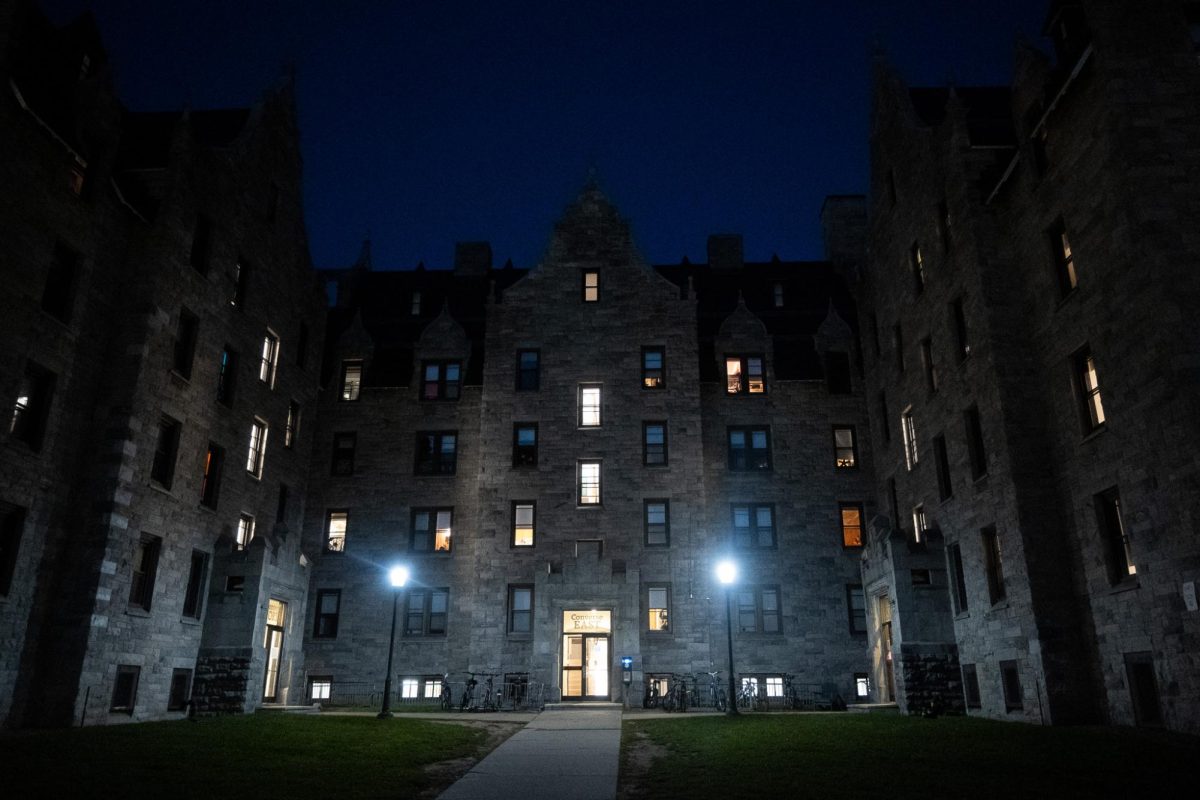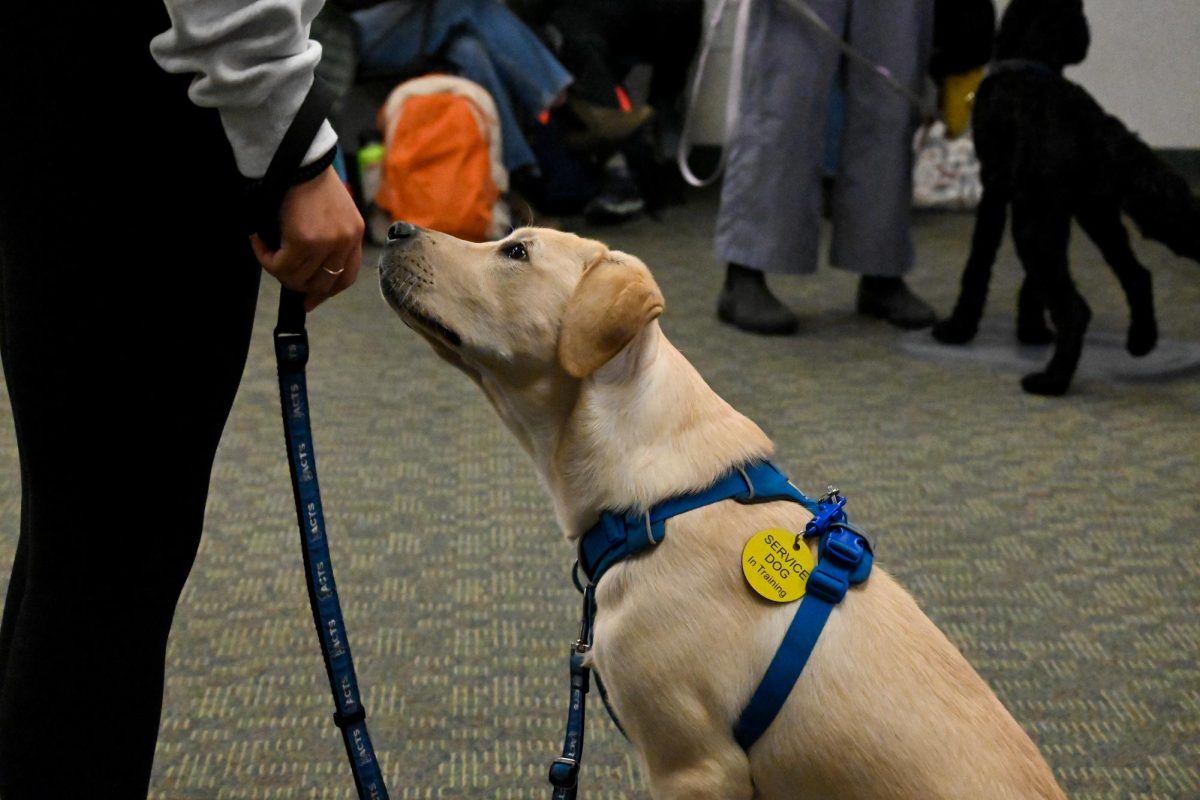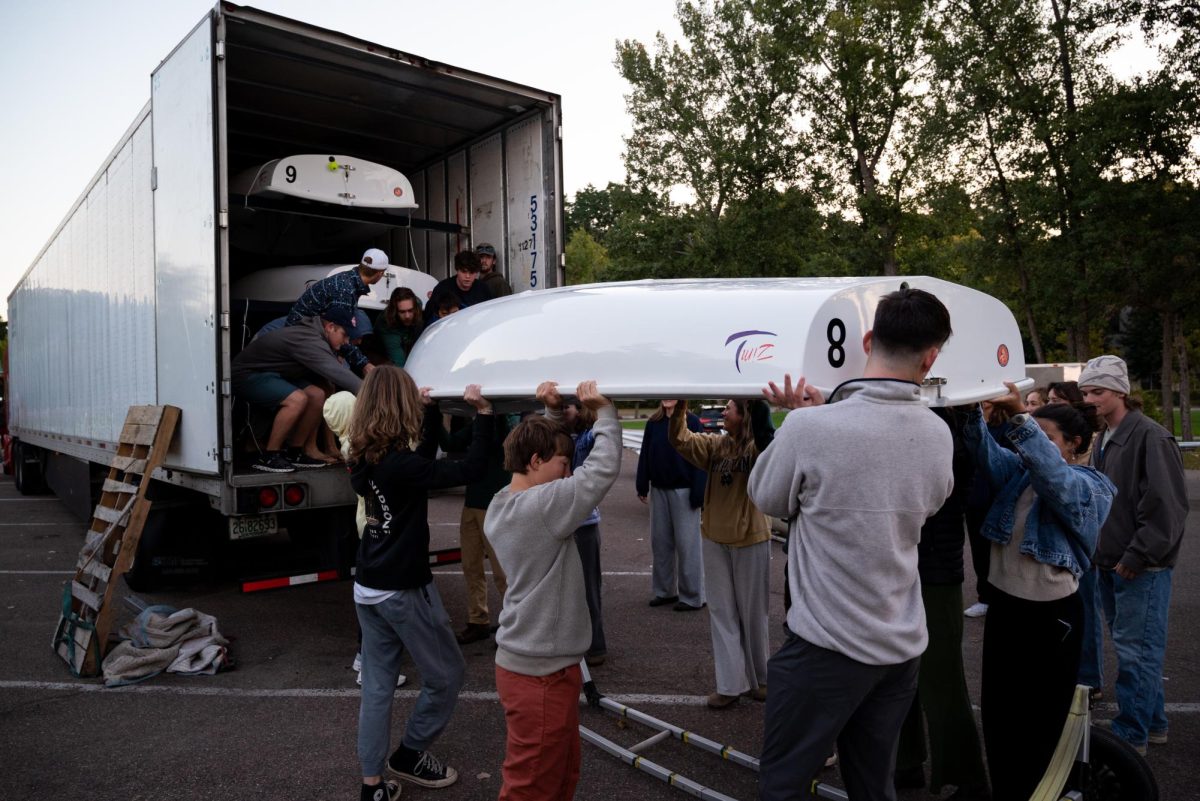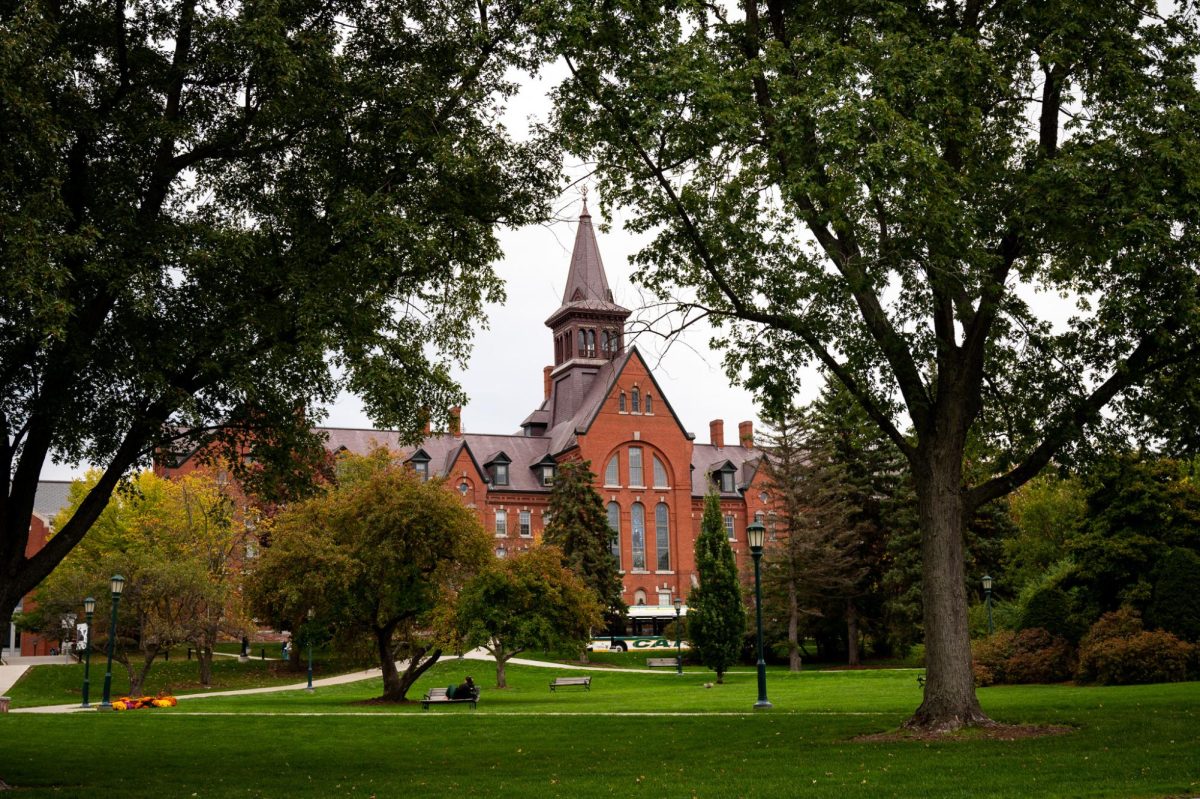Converse Hall has had some unpopular residents this fall, according to one current and two former residents of the hall.
Two anonymous student sources, who have both since moved out of Converse, said their first bat encounters in the hall were when they saw a dead bat trapped in a window in the Converse attic on Aug. 18.
After seeing a hole in the wall nearby, Student 1 submitted a Fix-it request and was told by ResLife that they had contacted people to remove the bat, they said.
Student 1 said that when they told an RA about the dead bat, the RA told them that they knew about the bat because it had been flying around earlier. The student also said that RAs had told them bats were around before their Aug. 18 move-in.
No bats are present in Converse as of Sept. 22, according to an email on that date from ResLife Director Charles Holmes-Hope.
“On August 21, 2023, we learned that during early arrival, two students reported seeing a bat. We immediately addressed the reports by working with University Facilities Management,” the email stated. “Our team coordinated with UFM to safely remove the bat in accordance with state law while prioritizing student safety.”
Three bats were found in Converse, according to Holmes-Hope. One was captured and removed, and the other two were already dead. No reports of a student making physical contact with a bat have been made, he stated.
A third anonymous student, who still lives in Converse, said that bats were removed mostly by students.
“I haven’t actually heard of many maintenance people coming in and removing them, just because they take too long that some students will just grab a towel and bring them outside,” student 3 said.
In response to a question about whether anyone got rabies shots as a precaution, Holmes-Hope stated in a Sept. 27 email that ResLife was not aware of any residential students receiving rabies vaccinations.
An anonymous RA said that Residential Education Team staff did advise students in Converse to get rabies vaccines, but ResLife did not coordinate the vaccinations and students got them independently.
“I do know multiple RAs and multiple residents who were advised to get rabies shots after being in proximity to bats and many who did go get those rabies shots,” the RA said.
Two students interviewed also said they had heard of other students receiving rabies vaccinations after being close to bats.
To control the issue, pest control did a walk-through of the building and facilities staff blocked holes and access points with foam, Holmes-Hope stated. ResLife is placing high-frequency bat-repelling sound devices in the hall and are consulting with Ehrlich Pest Control on further measures, he stated.
Holmes-Hope described the measures as ongoing but stated the bat issue has been resolved.
Student 2 would stay up late because they were scared to sleep, they said. When they saw a live bat in the basement, they talked to a parent who contacted ResLife to move dorms, they said.
“I feel like ResLife did a lot to help me, but they are not doing enough to help the residents who are still in Converse,” student 2 said.
After seeing a bat in the trash room and later that night hearing bats chirping, student 1 decided they needed to move out of the building, they said.
A parent emailed ResLife and didn’t get a response, but a day or two after the email, the student got a phone call from ResLife saying they would be moved to another building, they said.
Student 2 said they weren’t told about the bats during move-in on Aug. 18, but would have liked to know.
“I just wish that ResLife was more communicative about all this—like, ‘hey, there’s been issues in the past, this is what you’re getting yourself into,’” they said.
Student 2 said that the hazards of having a potentially rabies-carrying animal in a building people live, work and sleep in requires a quicker pest control response.
“I understand that things take time, but when it’s a serious public health risk, I think there should be a little bit more urgency around this kind of issue,” they said.
Student 3 said that they got a message from their RA before moving in on Aug. 27 about buying a cover for the gap under the door for pests, but the message didn’t specify bats. They were told about the bats in an Aug. 28 floor meeting, a couple of hours after two were removed from the attic, they said.
The RA said that RAs were advised by their RET supervisor and area coordinator to tell their Converse residents to purchase under-the-door stoppers to prevent bats from crawling into rooms. Students purchased stoppers themselves, not ResLife, the RA said.
Student 2 said that after they moved out, they heard from a friend who saw a bat fly under the door of the student’s old room.
A bat hanging on a door frame was reported in a floor group chat around 6 p.m., and was removed at 10 a.m. the next morning, student 3 said. They believe that was on Sept. 1, and also said there were sightings on Aug. 30 and Sept. 7.
That bat, nicknamed “Batrick” by residents, prevented students from going into the hallway—which would have set off motion-activated lights, potentially startling the bat—and accessing stairwells or bathrooms, student 3 said. Nearby residents set towels in front of their door and maneuvered around the bat in the morning to avoid contact, they said.
Some residents were unable to access their room overnight because of bats nearby, and were told to submit a Fix-it and wait until the morning because it was after business hours, according to the RA.
The most recent bat sighting student 3 knows about was on Sept. 7, and people from pest control have been around the building, they said in their Sept. 20 interview.
While the bat issue isn’t at the level of affecting daily routines anymore, it still stays in their head when they’re on the upper floors of the building, they said.
“I’ve heard scratching in the walls, which I don’t know if it’s the bats or not,” student 3 said.
Student 3 referenced a Sept. 1 email from Holmes-Hope to Converse residents which stated in part that several species of bats live in New England and they’re not unique to UVM.
“Like in barns and stuff, that’s fine, but in living spaces, typically people take a couple extra steps to make sure there aren’t gaps inside,” student 3 said.
Also in the email, Holmes-Hope stated that ResLife is aware of the bats and asked students to submit a maintenance request if they saw a bat in the building.
“If you see a bat in your room, do not panic,” the email stated. “Exit the room calmly and close the door behind you. During normal desk hours, report the bat to the front desk. After hours, call your RA on Duty.”
The little brown bat and big brown bat, also known as house bats, roost in buildings during the summer. The little brown bat is considered endangered in the state, so harming, harassing or killing one can result in fines, according to the Vermont Department of Fish and Wildlife.
“While the vast majority of conflicts between humans and bats occur during July and August, occasionally, during the winter, bat and human conflicts arise when hibernating big browns are disturbed or when they arouse during a warm period and enter living spaces,” a Fish & Wildlife document states.















